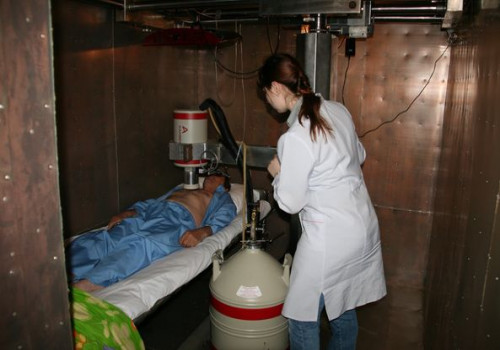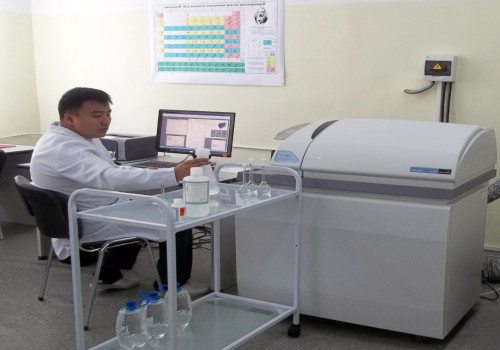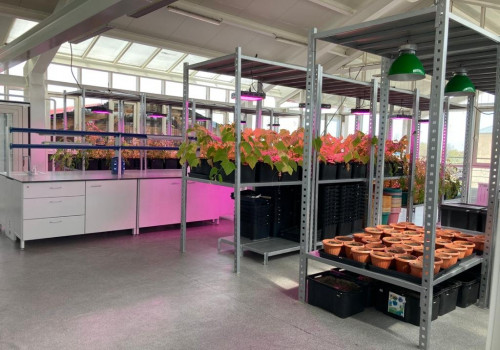Creation of Hardware Complex of Radioecological and Radiobiological Studies.
19 May 2022



30 Projects to the 30th Anniversary of NNC RK!
Project No.16. The period 2010–2019. Creation of Hardware Complex of Radioecological and Radiobiological Studies.
At the foundation period of the National Nuclear Center of the Republic of Kazakhstan, the hardware base for radioecological and radiobiological research was in a deplorable state. The equipment was obsolete and the buildings were abandoned and unheated. Therefore, the first and most pressing task of the young enterprise was to preserve the available resources and develop them to the national and then to the global level.
Currently, NNC RK has one of the best laboratory and analytical complexes in the CIS for qualitative and quantitative analysis of radionuclide and elemental composition of environmental objects, integrated radioecological and radiobiological studies of both applied and scientific nature.
To determine radiation status of various territories and objects, a set of instruments and equipment is used through which field, radiometric, dosimetry and spectrometry measurements are promptly, easily and accurately carried out. Special equipment and instruments available for specialists of NNC RK allow to take any environmental sampling with centimeter precision to determine coordinates.
Using specially equipped mobile laboratories, mobile living modules, it is possible to organize the required radiation monitoring in a short time anywhere in Kazakhstan.
To monitor external radiation doses to personnel, there is a high-quality system that operates in automatic mode that mitigates human factor and allows to improve the quality and increase the speed of data bulk processing. In addition, direct reading individual dosimeters are available to promptly monitor external radiation doses during operations with high and unstable background levels.
NNC RK assembled a unique hardware and methodical base for determining the content of natural and technogenic radionuclides, toxic elements in environmental objects, materials, and food in laboratory conditions.
Gamma spectrometry analysis covers all gamma-emitting natural and technogenic radionuclides and is performed using high resolution detectors based on high-purity germanium HPGe. Liquid beta scintillation spectrometers and alpha and beta radiometers are used to measure concentrations of beta-emitting radionuclides. Alpha-spectrometry determines the content of alpha-emitting isotopes such as 238Pu, 239+240Pu, 241Am and 210Po. Alpha-spectrometry analysis is conducted using spectrometers with semi-conductor silicon detector.
Quality control of spectrometric analysis is carried out through systematic analysis of IAEA reference samples and annual participation in inter-laboratory comparisons under the auspices of the IAEA.
To determine the elemental composition of environmental objects, a combination of inductively coupled plasma mass spectrometry, inductively coupled atomic emission spectroscopy, and X-ray fluorescence analysis is used.
Specialized equipment based on electron microscopes of various modifications is used on biodosimetry studies: electron automated microscope with software, automated system of metaphase search and automated system of metaphase search and photographic recording, software for analysis of chromosome aberrations and electron microscope.
To accommodate the hardware base, NNC RK reconstructed 5 laboratory buildings, including special rooms that solve a number of specific tasks.
Low-background premise is unique that the thickness of the premise walls several times weaker than background of penetrating radiation room, the sources of which are: cosmic radiation, emissions from nuclear facilities, explosions of nuclear devices radiation from technogenic radionuclides, radioisotopes of primary origin uranium-enriched series, potassium, etc., that are available in Earth’s crust (including 222Rn).
To count whole-body, a special low-background camera was designed. The chamber contains a broadband gamma spectrometer with a semiconductor detector based on extremely pure germanium. Using whole-body counter, it is possible to determine the concentrations of gamma-emitting radionuclides in the human body.
The experimental greenhouse allows us to conduct research on the redistribution of radionuclides in the components of the natural environment under controlled conditions.
The created hardware and methodical complex of radioecological and radiobiological studies allow to conduct scientific research in three main directions:
• Study of base parameters required for predicted assessment of radionuclides migration in the environment;
• Assessment of risks of radiation factors effects on the human and wildlife;
• Studies focused on upgrading of methodical base.
Through the created base, unique researches focused on obtaining data characterizing peculiarities of radionuclides redistribution among environmental components of various ecosystems are carried out.
The results of research on natural objects obtained at the test site are important and necessary not only for the Republic of Kazakhstan, but also for the entire global scientific community.
Latest news by category:
-
Participation in IAEA International Fusion Research Council Meeting on Controlled Thermonuclear Fusion
25 December 2025
-
NNC RK Participated in CIS Commission Meeting on Peaceful Use of Atomic Energy
17 December 2025
-
Pivotal Role of Kazakhstan in Global Thermonuclear Fusion Research
17 December 2025
-
Enhancing Human Resources Development with Support of JAEA
09 December 2025